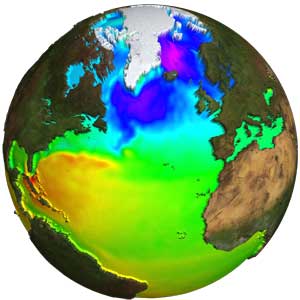Ocean circulation and its variations

Ocean currents can raise sea surface height by up to a metre higher over the surrounding area. Currents can therefore be mapped by measuring height variations. Satellite altimetry, supplying continuous worldwide observations, has been increasing our knowledge of the ocean circulation since the 1978 Seasat mission.
- <link newsstand links _top external-link>List of related links on Ocean




